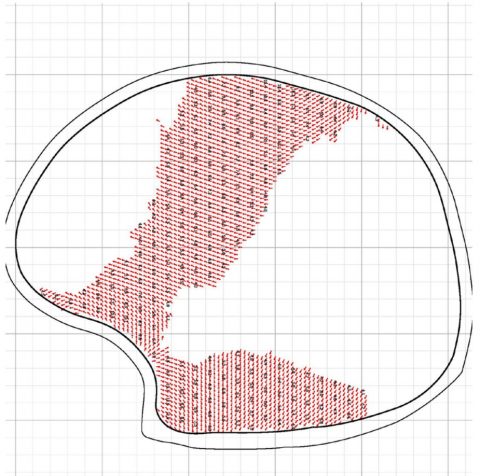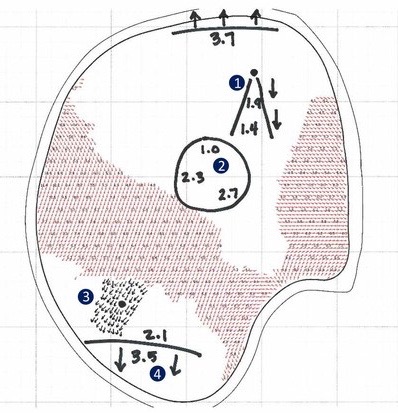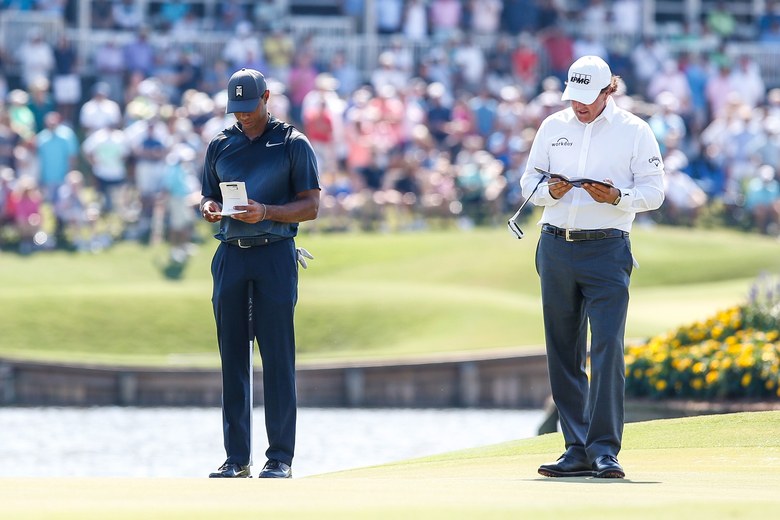Golf’s two main rules-making bodies have announced plans to limit the amount of information a player can receive regarding the contours of a green in an attempt to reintroduce the skill of reading greens back into the professional game.
In May 2017, USGA and R&A officials announced that they had concerns with the use of green-reading materials that had become an increasingly popular tool for professional and elite amateur golfers. More than 14 months later, the governing bodies have formally shared their misgivings, jointly announcing plans that would limit the scope of such materials beginning in 2019 in an attempt to “reaffirm” an emphasis on player skill.
Under a proposal unveiled on July 31, an interpretation of Rule 4.3 (use of equipment) would allow players to still use the green-reading books, but would restrict some of the information they can provide.
Specifically, the proposal calls for a ‘minimum slope indication limit’ that would allow green-reading books to continue to use numbers, lines, arrows or other indications to identify slopes on greens, but only in areas of four percent slope (2.29 degrees) or more. Areas where there is less slope on the green than the minimum would remain blank.
The proposal also includes a ‘maximum scale limit’ of 3/8-inch to five yards (1:480) to keep the printed material to a pocket-sized publication.

David Rickman, Executive Director of Governance at the R&A, said: “We have looked carefully at the use of these green-reading materials, and the extremely detailed information they provide, and our view is that they tip the balance too far away from the essential skill and judgment required to read subtle slopes. It is important to be clear, however, that we still regard the use of yardage books and handwritten notes to be an entirely appropriate part of the game.”
Thomas Pagel, Senior Director, Rules of Golf and Amateur Status for the USGA, added: “Both the USGA and The R&A are committed to the position that a player’s ability to read their line of play on the putting green is an essential skill that should be retained. The focus of the interpretation is to develop an approach that is both effective and enforceable.”
Traditional yardage books that include basic illustrations showing the outline of greens and include information indicating ridges and general slopes will continue to conform to the Rules of Golf. Players and caddies also can still amend any green-reading materials with certain handwritten notes. These notes, however, cannot be a direct copy or replica of the more-detailed green maps currently in use.

In reaching their conclusions, USGA and R&A officials spoke with numerous players on the PGA, LPGA and European tours about the matter, along with officials at each of the various international tours. From this input, the governing bodies explored a handful of options before arriving at the current proposal.
Pagel said that the premise behind the minimum slope proposal is that holes on greens are generally cut on flatter sections of the putting surfaces where the slope is less than 3.5 percent, or 2 degrees. If the green-reading materials could not show the breaks in these spots as they had been doing, players would have to rely on their own judgment
“Basically, the books are giving them a recommended line, and that goes too far. It’s removing that skill,” Pagel said. “So that was really the tipping point, where you started to see players using the books on short putts, it was plain to see that the skill of reading a green was quickly going away, and we wanted to make sure it was retained.”
The 4 percent limit equated to roughly the amount of slope that is readily visible to the naked eye, allowing players to use the materials to help them strategise how to play their approach shots into greens.
Players and caddies can continue to use the more detailed versions of the green-reading materials during practice rounds of tournaments, just as they are allowed to use lasers and GPS ahead of playing in events on the various tours, in order to do their homework for a tournament.
The new rules will also apply to elite amateurs and even club golfers, who will not be allowed to use such detailed materials when playing rounds which will be submitted for handicap purposes.
The USGA and R&A has now begun a six-week feedback period, which runs up until October 15, where interested parties can offer suggestions before a final version of the interpretation goes into effect on January 1, 2019, along with the new Rules of Golf.



